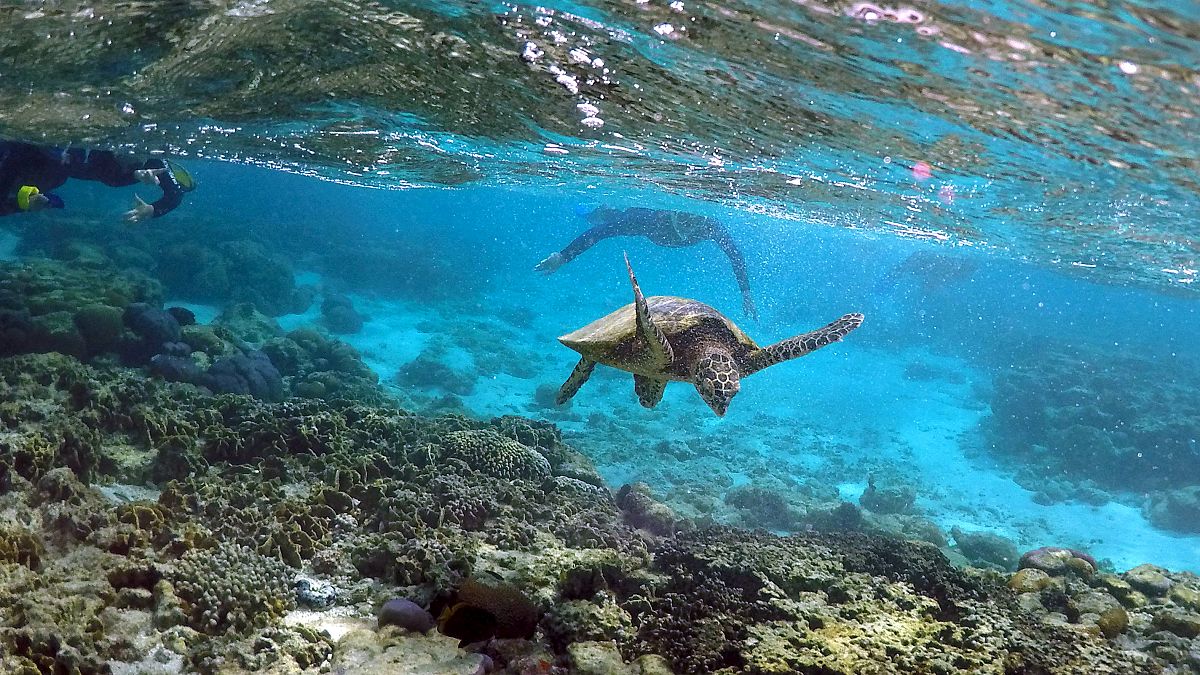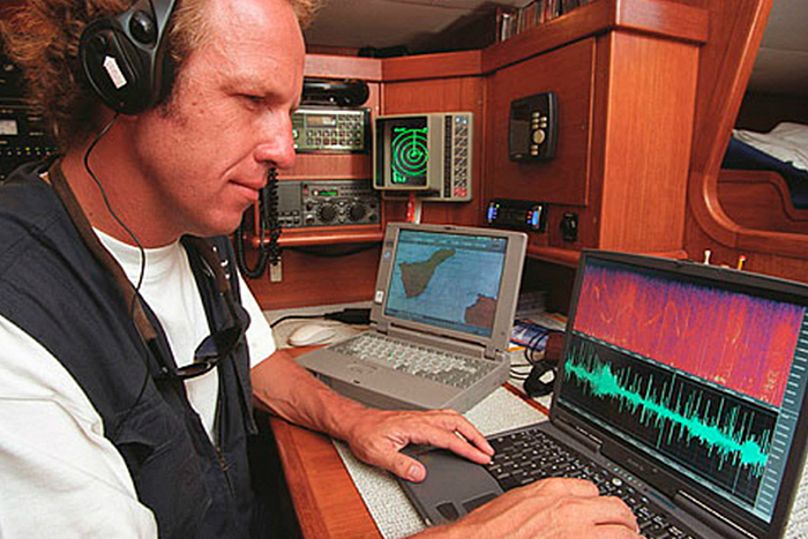Sure you can see litter on the beach, but underwater noise pollution is a threat that few people know about.
Litter on beaches is sometimes all too visible but there is one kind of marine pollution the human eye cannot spot.
Underwater noise pollution caused by human activities — such as motors, explosions, or underwater grilling — can damage the marine ecosystem just as bad if not worse.
Noise pollution is also many cases inaudible since it reaches frequencies imperceptible to the human ear. However, it’s increasing with the “development of industrial activities at sea,” explained Michel Andre, an engineer and biologist leading the project "20,000 Sounds under the Sea", which maps out noise pollution levels in the oceans, in collaboration with the Applied Bioacoustics Laboratory of the Polytechnic University of Catalonia in Barcelona.
Aboard the Fleur de Passion, an old German navy minesweeper built-in 1941, Andre and his team collected more than 500 hours of recordings of the noises in the seas and oceans during four years of between Sevilla and Cape Town, South Africa.
Their conclusion is that oceans are becoming noisier and that the main source of noise comes from commercial ships, in addition to seismic and military activities.
“Noise pollution is now recognised as one of the major disrupters of marine ecosystems that threaten the natural balance of the oceans,” said Andre in the document outlining his expedition.
Scientists have demonstrated that these sounds impact the life cycle of multiple marine species, since the vast majority of fish and invertebrates used sound for their vital functions, according to a 2018 study from researcher and professor at Dalhousie University in Halifax, Linda Weilgart.
“The noise’s negative impact on the development of marine animals include body malformations, higher egg mortality or immaturity, development delays, delays in metamorphosis and settlement, and slower growth rates,” she said.
In November 2018, the United Nations highlighted the urgent need for further research and international cooperation to assess and address the potential effects of anthropogenic underwater noise in all ocean areas.
Where is the level of marine pollution still low?
Fleur de Passion’s cartographic project aims to raise awareness that noise pollution has a negative impact on oceans but also to explore maritime zones where the levels of noise are still unknown, like the Southern Hemisphere.
Specifically in the South Pacific, between French Polynesia and Australia, there are zones where noise from human activities hasn’t reached a critical stage.
“This will certainly help the scientific community better understand and hopefully correct its advent in the last century,” said Andre.
Acoustic data collected by the expedition will help build models to predict future changes in the marine environment. This work is particularly relevant in the Arctic and Antarctic regions, where the ice has so far managed to keep aquatic silence, but which are not safe from imminent industrial explorations.

